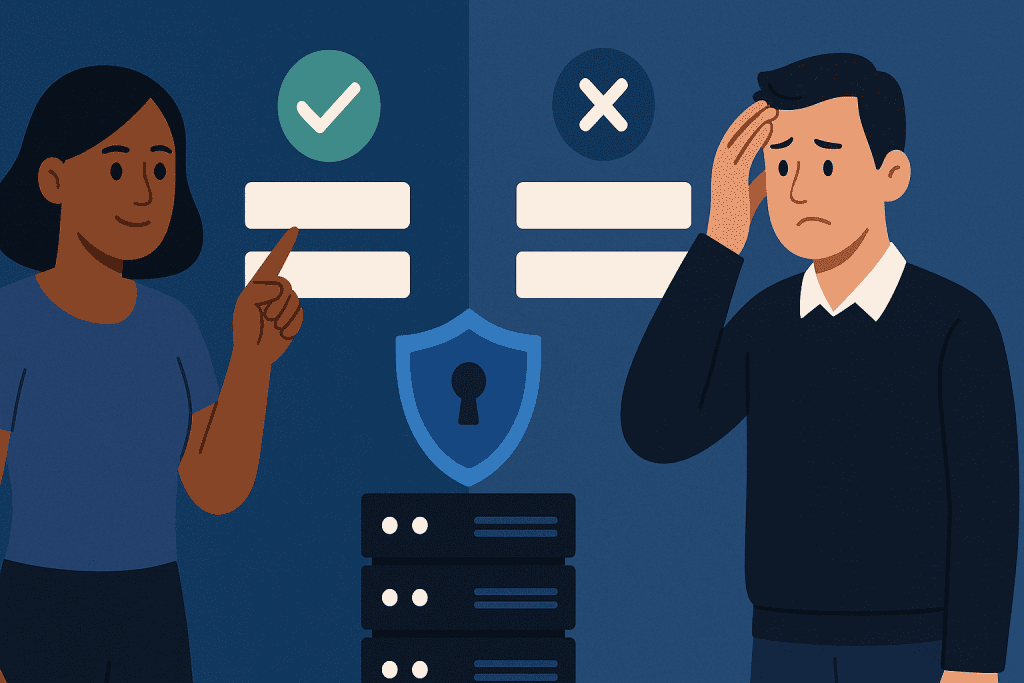When organizations talk about unlocking the potential of their information, data governance always emerges as the foundation. It is more than just compliance—it is the framework that ensures accuracy, security, and accountability for all data. In today’s digital economy, where information is both an asset and a risk, understanding the definition of it is critical.
Strong governance frameworks empower not only large enterprises but also startups and public institutions. By building trust with customers, regulators, and partners, governance becomes the bridge between innovation and responsibility. It is the positive force that drives digital transformation while minimizing risks of misuse and error.
So, whether you are leading a corporate strategy, managing healthcare records, or simply analyzing business performance, knowing what governance means helps ensure that every decision made with data is reliable, ethical, and future-focused.

What is Data Governance?
At its core, it is the system of rules, policies, and practices that dictate how data is managed within an organization. It defines who owns data, how it is stored, how it is shared, and how its quality is maintained.
Other terms for governance include information governance, data management policies, or enterprise data standards. Regardless of the name, the purpose remains the same: to create consistency, reliability, and trust in data-driven processes.
Without governance, data becomes fragmented, inconsistent, and vulnerable to misuse. With it, businesses achieve clarity, efficiency, and resilience in an environment where data is constantly growing.
In simpler terms, it answers key questions like:
- Who owns the data?
- Who has access to it?
- How accurate and reliable is it?
- How should it be used responsibly?
It is often referred to as information governance, data management policy, or enterprise data strategy. No matter the term, the goal remains the same: to maximize the value of data while minimizing risks.
Breaking Down Data Governance
To fully understand it, let’s break down its essential components:
Data Quality
Ensures information is accurate, consistent, and reliable.
Data Stewardship
Assigns responsibility for maintaining and protecting data assets.
Policies & Standards
Defines rules for data access, sharing, and security.
Compliance & Risk Management
Aligns practices with regulations like GDPR, HIPAA, or CCPA.
Technology & Tools
Uses software platforms for cataloging, monitoring, and enforcing governance.
Think of it as the “constitution” of your organization’s data ecosystem. It sets the rules and assigns responsibilities to keep everything organized, trustworthy, and secure.
History of Data Governance
The idea of managing information responsibly is not new. It has evolved alongside technology, regulations, and business needs.
| Year/Period | Milestone | Impact |
|---|---|---|
| 1960s–1970s | Early database management systems | Introduced structured data storage and access. |
| 1990s | Rise of enterprise data warehouses | Centralized large-scale business information. |
| 2000s | Emergence of compliance laws (e.g., Sarbanes-Oxley, HIPAA) | Forced organizations to manage data accountability. |
| 2010s | Big Data & cloud computing boom | Increased focus on scalability and analytics. |
| 2020s+ | AI, IoT, and global data regulations (GDPR/CCPA) | Broadened scope of governance to security, ethics, and real-time insights. |
The history shows how data governance transformed from a technical back-office task into a strategic priority for business resilience.
Types of Data Governance
There isn’t a one-size-fits-all approach to data governance. Organizations choose models based on their size, industry, and strategic goals. A centralized model puts all governance under a single authority, ensuring consistency across the enterprise. In contrast, a decentralized model gives each business unit autonomy, which can increase flexibility but risks inconsistency. A federated model blends both approaches, balancing central oversight with departmental independence. Some organizations adopt regulatory-driven governance, focusing on strict compliance with laws and industry standards. Finally, adaptive governance allows policies and structures to evolve in response to business needs and innovation. Together, these models highlight the versatility of data governance in addressing different organizational priorities.
| Model | Description |
|---|---|
| Centralized Model | A single team or authority manages all data rules, ensuring consistency. |
| Decentralized Model | Each business unit manages its own data governance independently. |
| Federated Model | Combines central oversight with departmental autonomy for balanced governance. |
| Regulatory-Driven Governance | Focuses on strict compliance with regulations and industry standards. |
| Adaptive Governance | Employs flexible strategies that evolve with business changes and innovation. |
How Does Data Governance Work?
Data governance functions as a structured cycle that ensures information is managed responsibly and effectively. The process begins by defining policies, which establish clear rules for data collection, storage, and usage. Next, organizations assign roles such as data stewards, custodians, and governance committees to oversee compliance and accountability. To support these efforts, they implement tools like governance software for monitoring, cataloging, and auditing data assets. Ongoing monitoring and enforcement helps detect policy violations and maintain regulatory compliance. Finally, governance is not static; organizations must evaluate and improve their practices continuously, adapting to new regulations, technologies, and business needs.
Pros and Cons of Data Governance
Before adopting a governance framework, it’s important to evaluate both its strengths and challenges.
Data governance is undeniably powerful, but like any major business initiative, it comes with trade-offs. When applied correctly, it improves trust, efficiency, and compliance. However, implementation requires resources, time, and cultural change.
| Pros | Cons |
|---|---|
| Improves data quality and reliability | Requires significant investment of time and money |
| Enhances compliance with laws like GDPR and HIPAA | Can slow operations if overly rigid |
| Boosts decision-making with accurate insights | Needs cultural change and executive support |
| Protects sensitive information from misuse | Risk of “too much governance” leading to bureaucracy |
| Strengthens customer trust and brand reputation | Implementation may overwhelm smaller businesses |

Uses of Data Governance
The definition of data governance is best understood by looking at its real-world uses, supported by credible sources:
IBM. What is data governance? Explains how governance ensures data quality, security, and compliance across enterprises.
Collibra. What is Data Governance? Describes how organizations use governance to unify data definitions, reduce silos, and support reliable analytics.
Alation. Data Governance Best Practices for 2026 Offers forward-looking strategies for implementing governance frameworks that scale with AI, cloud, and growth.
Data.world. Modern Data Governance Best Practices Shares key techniques data teams use—such as agility, modular policies, and stakeholder alignment—to sustain governance programs.
DATAVERSITY. 2025 Data Governance Best Practices Guide Provides actionable steps, KPIs, and examples for building or maturing governance in organizations of any size.
Conclusion
As data continues to grow in volume and importance, governance will be the key to building trust with stakeholders, unlocking innovation, and shaping a more secure future. By investing in governance today, businesses and individuals prepare themselves for the challenges and opportunities of tomorrow’s data-driven world.
Resources
- IBM. What is data governance?
- Collibra. What is Data Governance?
- Alation. Data Governance Best Practices for 2026
- Data.world. Modern Data Governance Best Practices
- DATAVERSITY. 2025 Data Governance Best Practices Guide
